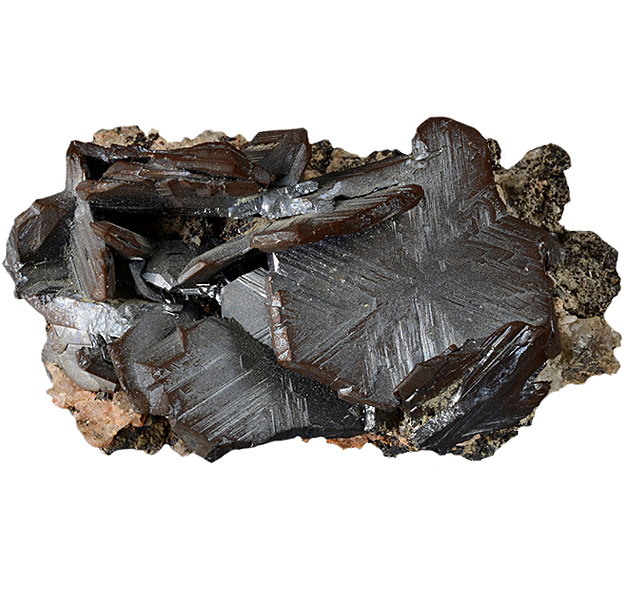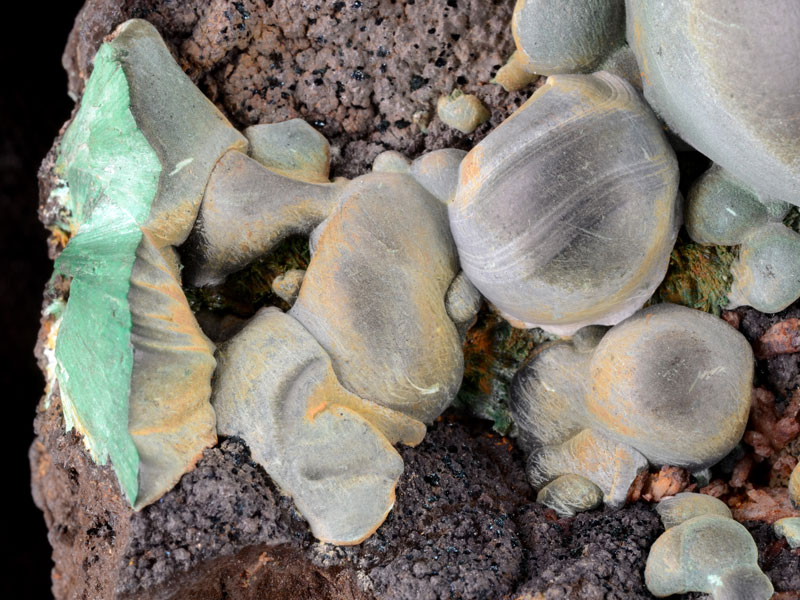
Fact sheet
Malachite is a hydrated copper carbonate mineral. It is a so-called secondary mineral, formed by the near-surface weathering of primary sulphide minerals. It is not an important copper ore mineral in itself, but can be a good indicator of copper sulphide minerals at depth.
However, mining folklore tells of other ways of locating rich ores: miners’ superstition had it that Jack-o’-Lanterns or Will-o’-the-Wisps, sometimes seen in the mines, indicated where rich ore would be found. Around 1850, the North Basset miners were becoming increasingly desperate to locate new deposits of copper, and eventually took the advice of an elderly local seer named Gracie Mill. Gracie suggested that they dig where these ghostly green lights had been seen. Her prediction proved sound as the mine struck rich copper ore and production soared during the 1850s. Gracie was rewarded with a monthly payment, a new dress each year and Grace’s shaft was named in her honour.
This specimen of malachite, from North Wheal Basset, was acquired by the Royal Institution of Cornwall in 1856 in the profitable years that followed Gracie’s prediction.
Chemical Formula: Cu2(CO3)(OH)
Specimen no. TRURI: 1856.24.1
Location: North Wheal Basset, Illogan
Grid Reference: SW 688 401
Mindat http://www.mindat.org/min-2550.html
This Collection focuses on Cornwall and West Devon’s mineralogical and mining heritage. The specimens it features are drawn from the collection of the Royal Institution of Cornwall (RIC) held at the Royal Cornwall Museum (RCM).
This collaborative project involving the RCM, the Cornish Mining World Heritage Site and The Open University explores how access to the RIC’s mineral collection and the stories it can tell can be widened using digital technology. It includes radioactive minerals from Cornwall that would otherwise be inaccessible to the public for health and safety reasons.
Sample details
More from this collection












